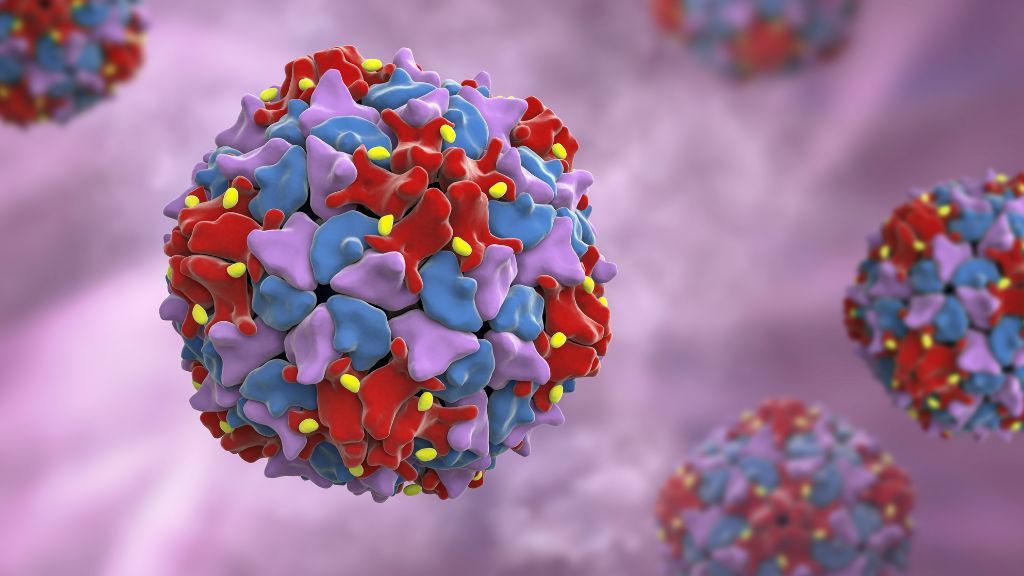A strain of poliovirus that can sometimes cause paralysis has cropped up in the sewers of London and may be spreading among closely-linked individuals in the north and east regions of the city, the U.K. Health Security Agency (UKHSA) warned (opens in new tab) Wednesday (June 22).
The UKHSA has launched an investigation to understand the scope of this spread and flag any suspected cases. In general, the virus poses an “extremely low” risk to the general public, but it does have the potential to spread in areas with patchy vaccine coverage, the agency advised.
“On rare occasions it can cause paralysis in people who are not fully vaccinated so if you or your child are not up to date with your polio vaccinations it’s important you contact your GP to catch up or if unsure check your Red Book,” the child health record used by the National Health Service (NHS), Dr. Vanessa Saliba, the consultant epidemiologist at UKHSA, said in the statement. “Most of the U.K. population will be protected from vaccination in childhood, but in some communities with low vaccine coverage, individuals may remain at risk.”
The World Health Organization declared the U.K. polio-free in 2003, and overall, there’s a low risk of polio transmission in the country due to a high rate of vaccination, according to the UKHSA. However, in recent years, the rate of childhood vaccination has dipped across the country and especially in certain pockets of London, so the health agency is now urging residents to check on their children’s vaccination statuses.
The UKHSA and Medicines and Healthcare products Regulatory Agency regularly monitor for poliovirus in sewage samples collected from the London Beckton Sewage Treatment Works. In a typical year, the agencies detect one to three unrelated polioviruses lurking in the sewage system, but these tend to be isolated events linked to individuals vaccinated with the live oral polio vaccine, according to the UKHSA.
The oral polio vaccine contains live, but weakened, polioviruses that can be shed in the stool of vaccinated people and thus end up in the sewers, according to the Global Polio Eradication Initiative (opens in new tab) (GPEI). If they remain weak, these poop-bound polioviruses can actually boost the level of immunity in communities with poor sanitation, by spreading to unvaccinated people. However, in some instances, the viruses have evolved to behave more like wild, naturally-occuring polioviruses that can cause illness in people who aren’t fully vaccinated.
Due to this risk, many countries, including the U.S. (opens in new tab), only use “inactivated” polio vaccines, rather than oral vaccines, and for polio to be fully eradicated, all countries will eventually need to halt their use of the oral vaccines, the GPEI states.
—Africa declared free of wild poliovirus
—Death from rare tick-borne virus reported in Maine
—Scientists discover viruses that secretly rule the world’s oceans
In London, health officials detected several closely-related polioviruses in sewage samples collected between February and May. Among these they found vaccine-derived poliovirus type 2 (VDPV2), the most common type of vaccine-derived poliovirus, per the GPEI. VDPV2 can rarely cause severe illness and paralysis in those who are not fully vaccinated, according to the UKHSA.
The presence of VDPV2 hints that the poliovirus may be spreading among “closely-linked individuals in North and East London,” who are now shedding virus in their stool, the statement reads. So far, the virus has only been detected in sewage and no cases of paralysis have been reported.
“The majority of Londoners are fully protected against Polio and won’t need to take any further action, but the NHS will begin reaching out to parents of children aged under 5 in London who are not up to date with their Polio vaccinations to invite them to get protected,” Jane Clegg, chief nurse for the NHS in London, said in the statement.
Originally published on Live Science.
Nicoletta Lanese
Staff Writer
Nicoletta Lanese is a staff writer for Live Science covering health and medicine, along with an assortment of biology, animal, environment and climate stories. She holds degrees in neuroscience and dance from the University of Florida and a graduate certificate in science communication from the University of California, Santa Cruz. Her work has appeared in The Scientist Magazine, Science News, The San Jose Mercury News and Mongabay, among other outlets.
Source: Read Full Article

